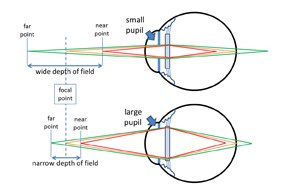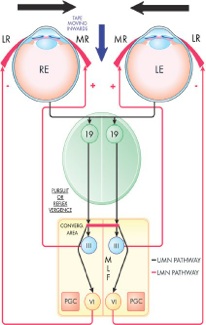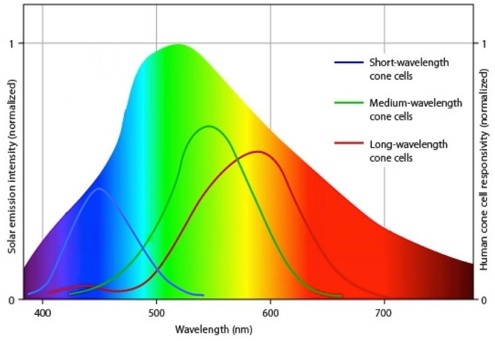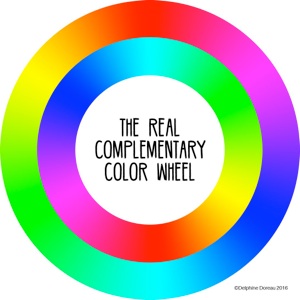Fascinating Biology

Here we will look at the remarkable world of biological facts. One place for a large database of biological definitions is: Biology Online. Frankly I don’t find it very helpful but you might.
Human Biology
Human Eyesight
Watch any sport and you will be amazed at the skill of the players but have you ever wondered at the rather crafted coordination of physical and mental agility of the human body ? It all starts with the initial perception of the problem -by what the sportsperson sees. This can be split up in to many different strands: Acuity, colour differentiation, adaptation to movement, interpretation by the brain and muscle control as a result.
Acuity
This is the ability of a light sensitive system to resolve visual differences in shape and brightness. Unless the shape actually shades the light sensitive area a lens will be needed. Insects have compound eyes with thousands of fixed lenses which, whilst not giving as good a resolution as other systems, have the advantage that they can far better resolve movement, polarised light and UV.
The highest-quality compound eyes are found on dragonflies with 30,000 lenses per eye. Birds of prey, such as buzzards, have retinas with up to 1, 000, 000 sensor cells per square millimeter. The eyes of these birds have two to three times the acuity of human eyes, but the acuity of a human eye is still about 100 times better than that of the best insect compound eye. A revealing introduction is University Of Sussex: Insect Acuity.
Most vertebrates have a pigmented light sensitive surface -a retina. Thankfully Wikipedia has a brilliant article on this: Wiki Visual Acuity.
Vertical Pursuit Pathway
The intensity and spectral range of normal daylight varies all over the world depending on season and atmospheric conditions. However a simplified average for visible light, for comparison with human eye sight is overlayed by the spectral graph (right).
Click on the image right for a succinct Colour Photography Reference by Pixelsham the renowned electronic media website called The Sensitivity Of Human Eye.
Colour Differentiation
In order to resolve fine detail at distances and to differentiate those in colour comes at a cost of complexity, weight and a substantial brain to interpret and control what and how to see what is intended. Humans have the most sophisticated eye - brain combinations when it comes this although birds might surpass the resolution.

Depth Of Field-Pupil Size
Our retinas have a range of spacings of brightness sensitive rod cells and a grouping of less brightness sensitive but individually colour sensitive cone cells round a central spot: the fovea. Honey bees go one better - they have four cones.
Our eyes perceive a wide range of colours over a wide range of light levels. Scientific studies, first started in the 1920’s, looked at of how our eyes perceive normal daylight. Concluding that there are three specialised cells (see right) they issued the 1931 CIE Colour Space document.
Work continues to the present time but Ragnar Granit is recognised as one of the greatest researchers culminating with him gaining the Nobel Prize in 1967 for his life’s work. Studies found that people’s perceptions varied and so a large study was conducted concluding that the average human eye perceives luminance as 59% green, 30% red and 11% blue which are the figures used in colour cameras up to this day. However this is not the full story because the chemistry in the colour receptors leads to a significant overlap in cone sensitivity especially in Red and Green..
Adaptation To Movement
It’s all very well to peer at something and ‘see’ it but as early cameras showed movement can cause blur of the image if their chemistry is slower than time taken for fine detail to change ie by movement of the eye and/or the subject. Eyes that turn, and better still heads that can move in two dimensions, eg birds of prey, can help. Of course if the distance to the subject varies them the focus of the lens will need to be altered dynamically. Thus both the hunter and the hunted need to have good eyes. JaypeeDigital have a very good article on this (click the image to the right).
Visible Light Spectrum and The Optical Sensitivity Of Human Cone Cells
Interpretation By The Brain
Our brain’s are incredible processors of information and outward control of our bodies. A significant portion of it is devoted to interpreting the signals sent to it by our two optic nerves. I’m not going to guess at this so offer some links:
Introduction
A simple introduction to what going on is: Brain Facts: The Processing Of Information: Vision.
A deeper introduction might be: Scientific American: How The Brain Processes Images. However this is not very visual !
An introduction to the Visual Cortex: AmericanMuseumOfNaturalHistory: Vision: Seeing Color
Good Overall Information
As ever see: Wikipedia:Visual Perception
More Detail
Neural pathways in the brain -a really good article: UniversityOfQueensland: Visual Perception
A thesis (you will have to step through the slides): Researchgate: Visual Attention Modeling (the site says that download is possible)
Colours And Art
Of course the art that we humans produce is always what we want to convey in the way that we want to convey it so the choice of materials and colours if for us. There are a lot of basics out there.
However, having been an Engineer working in TV all my life I was dumbfounded at what my son was taught by his rather ‘difficult’ Art teacher at school for ALevel (in fact it got so ‘difficult’ that he stopped attending that subject entirely which I think is a great pity and so does he). My dumfoundmanship was based upon what he’d been told was the standard artist’s ‘primary colour pallette’ with it’s corresponding ‘complementary primary colours’. Although as an amateur artist myself, having attended an Art Foundation Course, I was introduced to it I threw out those given complementaries and carried on regardless. When I was trained in the basic concepts of human colour perception that colour cameras had to reproduce for later TV display it was nothing new to me because I had ignored what I thought was technically and artistically wrong.
However the art world seems to have clung on to this misconception for dear life. Slowly but surely there are rebels out there beating to a different drum and I like artist Delphine Doreau’s attitude in her online Non-Dairy Diary article “A Modern Approach To Complementaries” -so finally the message of the “Real Complementary Color Wheel” is being put across. Do give her excellent explanation a read.
Click this image (right) to see..

Speech
Coming in 2023..
More to come later..
Hearing
Coming in 2023..
More to come later..
In the meantime a really good article is here: Biomedical.com: How The Brain Processes Speech
And here: American LibraryOfMedicine: PDF download: How The Brain Processes Music
Hormones & Emotions
Coming in 2023..
More to come later..
There’s a good article here: DrSarahMcKay: How The Brain Processes Emotions
Last update: 02/08/2024
Control Of Muscles
Coming soon..
What Animals See In Colour Or At Night
Due to the requirements of their hunting and feeding strategy it is possible to deduce what ranges colours some animals see. It can’t be an exact science because obviously they can’t talk to us but scientists have been able to devise experiments that cause a reaction in the animal. Here are some answers:
YouTube: How Animals See The World - child friendly (8m)
Cell Mentor Blog: 5 things you didnt know about how animals see color
Sciencing: How Do Animals See At Night
Evolution Outreach: Causes & Consequences Of Colour Vision -Incl scientific methods of study
Other Eyesight
More..
If you are looking for Nature topics I’ve started a new page. See the shortcut at the top of the page..



